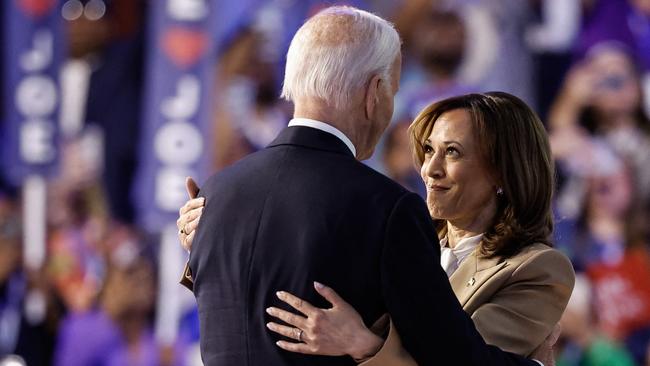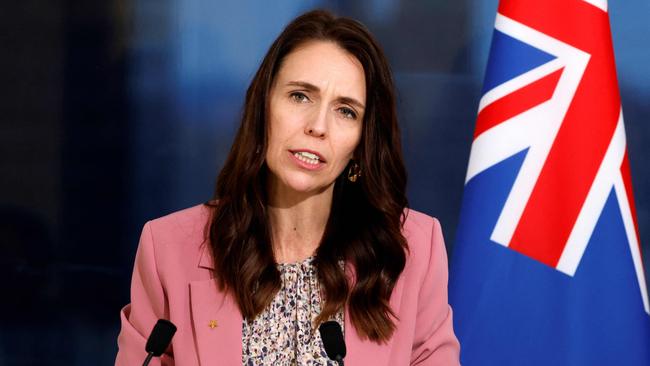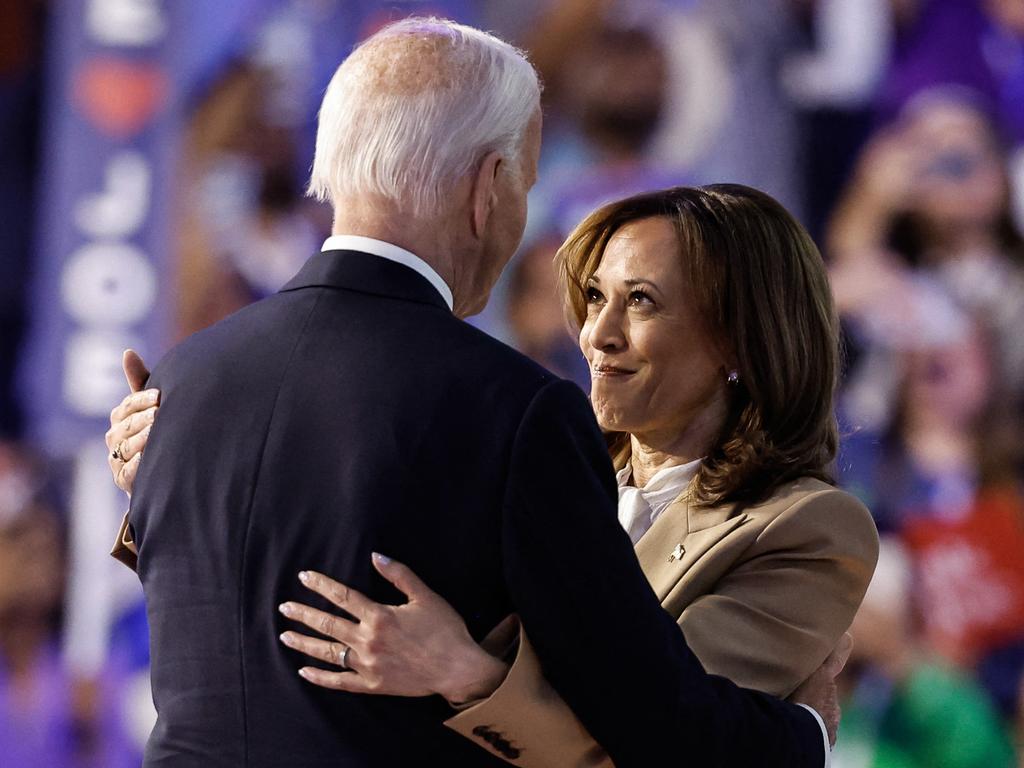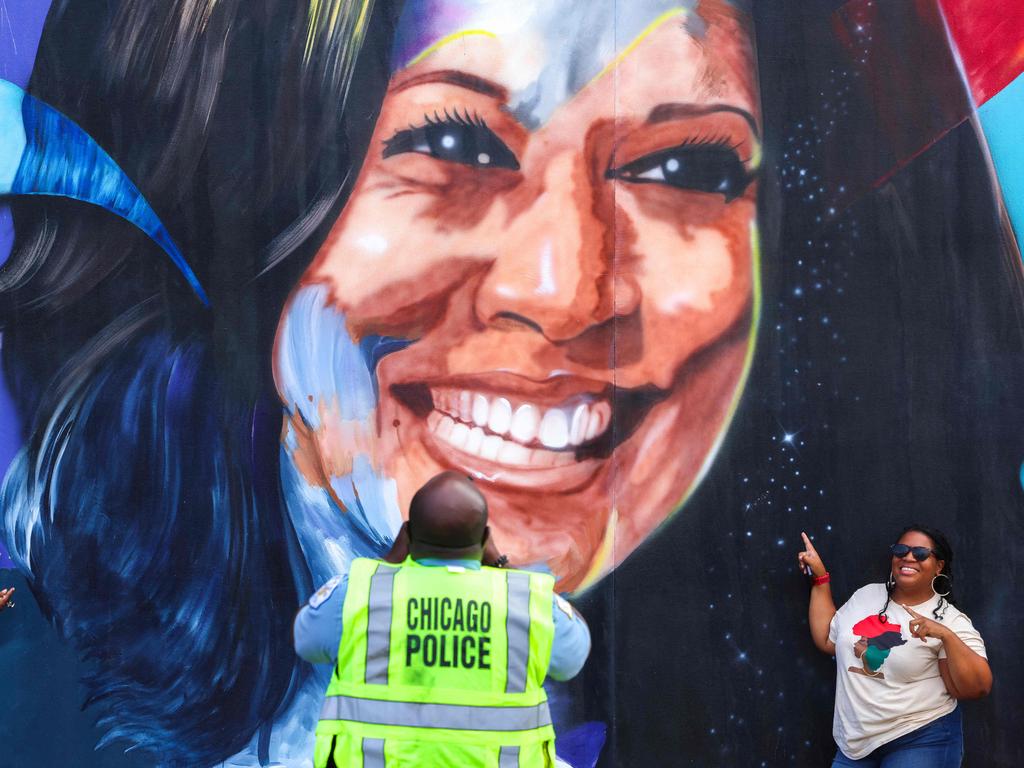Ardern’s lessons: what Harris and the Democrats should learn from Jacindamania

The former New Zealand prime minister’s attendance at the DNC will also make sense if ones tallies the remarkable similarities that help define the political histories of Ardern and US vice president Kamala Harris, who will formally accept the Democratic Party’s nomination for the presidency at the convention.
But even that could be read as cautionary tale for any voter running to embrace new political candidates enjoying sudden and precipitous popularity and momentum.
Prime Minister Ardern is a forward-looking, global leader who has inspired millions around the world. Thank you, Madam Prime Minister, for your leadership and for strengthening the ties between the U.S. and New Zealand. pic.twitter.com/Y70gaIsDdk
— Vice President Kamala Harris (@VP) January 19, 2023
Though Ardern will not command the main convention stage in Chicago and will instead appear in a panel discussion at a breakout session, she will be first ex-leader of her country to speak at the DNC.
Having crafted a post-political career as a global brand ambassador for liberal leadership, Ardern will sit alongside political figures from the US and Europe to discuss political and social equity and the promotion of democracy. The panel will be hosted by the Centre for American Progress Action, a Washington DC-based progressive think tank which Ardern joined in June as a fellow.
History often provides a fuller understanding of others and their actions, and the historical parallels between Harris and Ardern are too compelling – and instructive – to ignore.
Like Harris, Ardern was a watershed candidate who offered a powerful narrative of change and opportunity. New Zealand had never known a modern political leader like Ardern – she became prime minister at age 37, the nation’s youngest leader since 1856 – while the US is working through its own set of distinct political breakthroughs with Harris.
Most analogous between the Ardern and Harris is the speed and nature of their ascent to the party apex, and quite possibly its consequence. Just 49 days before New Zealand’s 2017 general election, Ardern dramatically up-ended the political landscape by replacing then opposition Labour Party leader Andrew Little, who was struggling to gain public support.
Harris’ rise to become her party’s standard bearer was nearly as swift and late in the election cycle. After a period of sustained party pressure to step aside, US President Joe Biden – also grappling to win over voters amid concerns about his age and ability – ended his re-election bid on July 21 and essentially handed the Democratic Party reins to Harris – 107 days before Americans go to the polls.
As Labour’s new party leader, Ardern almost overnight liberated the same unbridled public enthusiasm and interest that is currently propelling Harris’ electoral advantage. And as Harris is presently doing for the Democrats, Ardern quickly shed her party of a stolid visage under a leader who failed to generate any political vibe whatsoever.
But those nostalgic about Ardern’s rapid rise to party leader – and excited about Harris’ similarly rapid ascent – will do well to remember that it came with a lower level of scrutiny and examination typical of a normal-cycle candidate for the highest office.

Though some in NZ’s incumbent National Party at the time noted Ardern’s popularity masked a lack of real political and legislative achievement as a member of parliament, in the heady early days of ‘Jacinda-mania’, few questions about her actual ability to lead a government were asked.
And in Ardern’s case this proved not just problematic for her country, but also her leadership and her party’s fortunes. Could the US electorate be going through a similar moment and possibly face similar outcomes as ‘Kamala-mania’ sweeps the land?
Ardern’s ability to excite the electorate ensured Labour’s victory in 2017 – unseating the longstanding conservative National-led government – and she soon displayed her social democratic credentials by advancing an ambitiously progressive agenda.
Harris is doing the same in her campaign. Though Harris will probably pivot to the centre on some big campaign issues – notably immigration and crime – to give comfort to Middle America, it will likely be fleeting. An administration under her name will almost certainly install an agenda that echoes the liberal governing record of her running mate Governor Tim Walz in his home state of Minnesota.

After winning office in New Zealand and bathed in the warm air of victory, Ardern fixed upon policies that hit progressive sweet spots – despite being in coalition with the political handbrake that is Winston Peters and his populist NZ First party. And as she steered Labour to an outright majority government in 2020, beating a struggling and highly conservative National Party leader, Ardern further shaped her government as a clearinghouse for progressive ideas.
But in her enthusiasm, Ardern formed a misplaced understanding of what was political doable and publicly palatable across the wider electorate. This ultimately hurt her and her party politically. It also wasn’t overly favourable for the country.
Here’s the Ardern-shaped warning for Harris. The vice president is similarly veering deep into progressive territory in her policy settings and political playbook not just to placate her sometimes restive left wing, but to also spur any latent progressive support into action on her behalf.
On the economy, Harris is suspicious of unchecked capitalism and is open to intervention to ease people from poverty. On social issues and workers’ rights, Harris has made clear that she stands firmly on the Left. On reproductive rights, she roundly rejects a national ban on abortion and welcomes the fight against the many conservative-leaning states that seek to restrict choice. Harris sees government unleashed as a force for good, rather than an institution that needs to be contained as conservatives would have it. In sentiment or practice, these were Ardern’s positions as well.
Should Harris prevail in the general election, there will be the highest expectations among her inner circle, her party and its base that veering left should be the only direction of travel for her administration – as it was for Ardern, particularly in her second term.
For Harris, this is politically dangerous in a country marked by large pockets of conservatism – especially in Congress, which she needs to work with to be effective in office – and many independent voters wary of ideology in either direction.

Harris will need to govern broadly rather than narrowly, while also avoiding overplaying her hand politically. In the end, Ardern was guilty of both, and this impacted her ability to deliver.
Ardern’s bold goal to position New Zealand as the global leader on climate change mitigation, for example, looked good on paper and in speech, but amounted to little in practice. At home, her government’s ban on new oil and gas exploration and its aim to transition to a green economy earned as many political brickbats as bouquets.
The Labour-led government’s first term intervention to boost public housing stock amid a national housing crisis – led by the infamous government-run KiwiBuild initiative – over-promised and massively underdelivered, prompting an embarrassing political retreat on the issue. Her bid to close gaping social inequities – including a commitment to rid the country of child poverty – also failed to materialise.
Ardern’s effort to actively boost Māori governance and Māori language (te reo) in government communications and everyday use earned much public and political disquiet. This was a particular case on not governing for all. And if one looks closely at her leadership and beyond her unprecedented crisis management role – where she had to contend with the Covid-19 pandemic, the Christchurch mosque massacre and the deadly White Island (Whakaari) volcanic explosion – not governing for all could be well be the métier of her premiership.

Ardern’s inability to maintain focus and issue clear objectives was also a legacy item, and this came in greater focus as her time as prime minister wore on. Ardern finally acknowledged in 2022, deep into her second term, that she had overextended herself. This resulted in some major policies being dumped, and priorities reshaped and resorted. By now, the public had started to turn.
If a key metric of success in political leadership is the viability of policies and positions beyond the tenure of a leader, then Ardern arguably fell short. Soon after she formally tended her surprise resignation as prime minister in early 2023, new leader Chris Hipkins quickly dispensed with a series of Ardern-championed polices. Chief among them was the controversial push for greater Māori governance.
And after handily defeating Labour at the general election later that year, the winning centre-right National Party under Christopher Luxon hurried to terminate most aspects of Ardern’s agenda under its coalition government agreements with the right-wing ACT party and NZ First.
Though Ardern left office still reasonably popular on a personal level, her political buoyancy and ability to unite the country had started to truly deflate – punctured by overreach and a sweep to the left in growing defiance to where wider electorate was at.
Are we seeing something similar about to happen in Washington as it once did in Wellington? Only time will tell, but the signs are there.






Beneath the warm reception that likely awaits Jacinda Ardern’s scheduled appearance today at the Democratic National Convention in Chicago, her presence should serve as a warning for the resurgent Democratic Party – and their presidential candidate Kamala Harris – of the perils of embracing a progressive agenda at the expense of wider electorate.